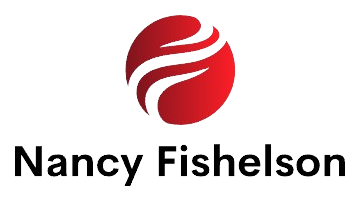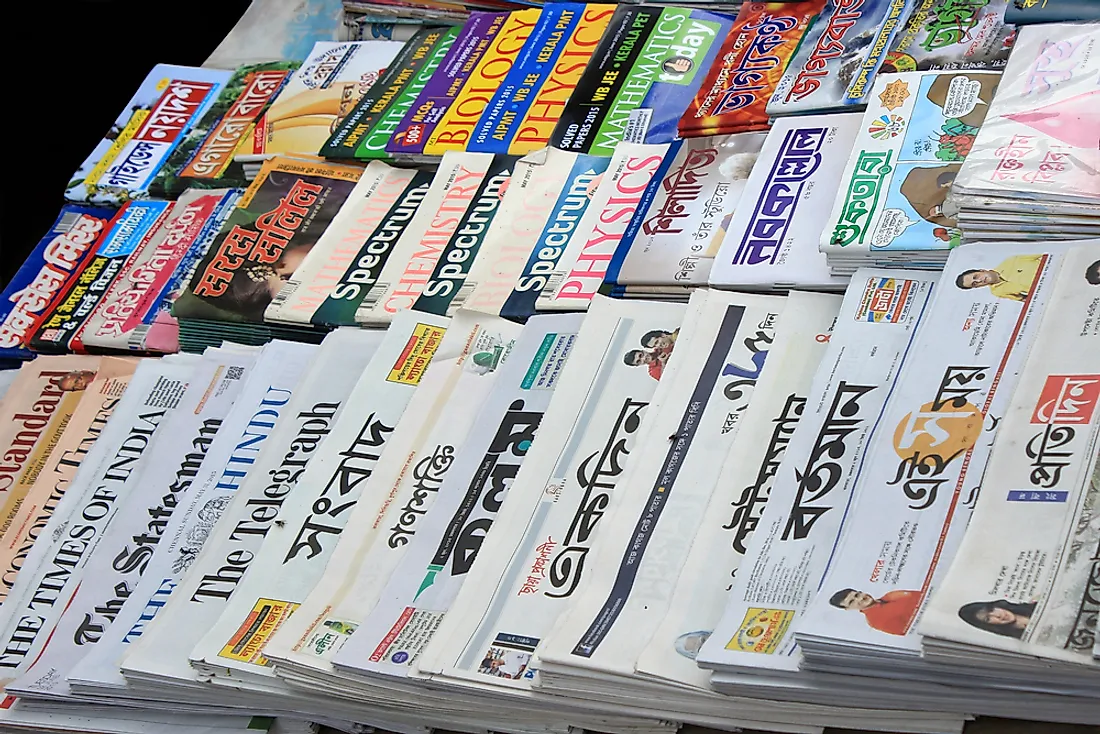Introduction
The process of printing newspapers is a fascinating blend of tradition and modern technology, meticulously orchestrated to bring the latest news to millions every day. At its core, newspaper printing involves a series of intricate steps, each vital in transforming raw news content into the familiar format readers eagerly anticipate.
Beginning with the gathering and editing of news stories, the process progresses to the creation of digital layouts that determine the final appearance of each page. These layouts are then transferred onto printing plates, typically made of aluminum, through a process called plate-making. Once the plates are prepared, they are loaded onto the printing press.
The printing press itself is a marvel of engineering, employing a variety of techniques such as offset lithography or digital printing to transfer ink onto paper with precision and speed. As the paper passes through the press, each page is printed with remarkable accuracy, ensuring clarity and readability.
Newspapers Printed – Prepress Stage:
Content Collection: The process begins with journalists, reporters, and editors gathering news stories, articles, photographs, and advertisements.
Editing and Layout: Editors review and edit the content, organizing it into a cohesive layout. Designers then create page layouts using specialized software, arranging text and images.
Page Proofing: Once layouts are finalized, proofs are created for review. This stage allows for corrections and adjustments before printing.

Plate Making:
Plate Preparation: After final approval, the page layouts are transferred onto printing plates. In traditional printing methods, this involves creating separate plates for each color used in the newspaper.
Plate Imaging: Modern printing presses utilize computer-to-plate technology, where digital files are directly transferred to printing plates using lasers.
Plate Mounting: Printing plates are mounted onto cylinders on the printing press, ready for ink transfer.
Printing Process:
Ink Mixing: Ink is prepared, often in specific colors required for the newspaper’s design.
Press Setup: Press operators calibrate the printing press, ensuring precise alignment and registration of the plates.
Ink Application: Ink is applied to the printing plates, typically using rollers, and transferred onto rubber blankets before finally imprinting onto the paper.
Printing: The press runs at high speeds, with paper fed through rollers to receive the inked impressions from the plates.
Color Registration: Press operators monitor color registration throughout the print run, making adjustments as necessary to maintain quality and consistency.
Post-Printing Processes:
Cutting and Folding: Printed sheets are cut into individual pages and folded into the desired format, such as broadsheet or tabloid.
Binding: For newspapers with multiple sections, pages are assembled and bound together using techniques like stitching or gluing.
Quality Control: Inspectors check for defects such as smudges, misprints, or color inconsistencies, ensuring that only high-quality Newspapers Printed reach readers.
Packaging: Newspapers are bundled, wrapped, and prepared for distribution to retailers, subscribers, and distribution centers.
Distribution:
Delivery Networks: Newspapers are transported via trucks, vans, or distribution networks to reach various destinations, including newsstands, homes, and businesses.
Circulation Management: Publishers track circulation numbers and manage subscriptions, ensuring newspapers reach their intended audience.
Digital Integration: In the digital age, newspapers often have online editions or digital replicas accessible through websites or mobile apps, expanding their reach globally.
Environmental Considerations:
Sustainability Efforts: Many newspapers have implemented eco-friendly practices, such as using recycled paper, eco-friendly inks, and reducing waste in the printing process.
Digital Transition: The shift towards digital platforms has reduced the environmental impact of printing newspapers, offering a more sustainable alternative to traditional print media.
Editorial Preparation
News Gathering: Journalists and reporters gather news from various sources, conducting interviews, and researching to provide accurate and relevant content.
Editorial Decision-Making: Editors review and prioritize stories based on their significance, relevance, and impact on the target audience.
Content Compilation: The selected articles, images, and advertisements are compiled into a cohesive layout, balancing news coverage with advertising space.
Digital Transformation
Content Digitization: The curated content undergoes digital conversion, transitioning from physical manuscripts to electronic files.
Layout Design: Graphic designers utilize specialized software to craft visually appealing layouts, optimizing readability and aesthetic appeal.
Virtual Proofing: Editors and designers review digital proofs to identify and rectify any layout or formatting issues before proceeding to the printing stage.
Plate Production
Plate Preparation: Using advanced imaging technology, the finalized layouts are transferred onto printing plates, either directly (CTP) or via intermediate film (CTF).
Plate Development: The exposed plates undergo chemical processing, selectively removing non-image areas and revealing the image to be printed.
Plate Inspection: Quality control measures ensure that the plates are free from defects and accurately replicate the intended content.
Printing Process
Offset Printing: Most newspapers employ offset printing presses, where inked images are transferred from plates to rubber blankets before being applied to the printing surface.
Ink Application: Automated systems precisely control ink viscosity and distribution, maintaining consistent color saturation throughout the print run.
Paper Handling: High-speed presses seamlessly handle large rolls of newsprint, feeding them through the printing units with precision and efficiency.
Color Registration: Sophisticated registration systems ensure precise alignment of color layers, minimizing misalignment or color bleeding.
Finishing Touches
Folding Techniques: Automated folding machines intricately fold newspapers into desired formats, such as broadsheets, tabloids, or quarter folds.
Trimming and Cutting: Precision cutting equipment trims excess paper and ensures uniform edges, enhancing the visual appeal of the final product.
Insertion and Packaging: Additional inserts, supplements, or promotional materials are manually inserted into newspapers before bundling and packaging.
Quality Assurance: Quality inspectors meticulously examine samples of the printed newspapers, verifying print quality, color accuracy, and overall presentation.
Distribution Dynamics
Distribution Networks: Logistics companies coordinate the transportation of printed Newspapers Printed from printing facilities to distribution centers and retail outlets.
Delivery Channels: Newspapers are distributed through various channels, including home delivery services, retail sales, and digital subscriptions.
Timely Delivery: Stringent schedules ensure that Newspapers Printed reach readers promptly, often in the early hours of the morning, to coincide with daily routines.
Editorial Curation
Editorial Meetings: Editors and journalists convene to discuss and prioritize news stories, weighing factors like relevance, timeliness, and audience interest.
Content Selection: From breaking news to feature articles, the editorial team carefully curates a diverse mix of content to cater to the varied interests of readers.
Advertiser Integration: Advertisements are strategically integrated into the newspaper layout, balancing commercial interests with editorial integrity.
Creative Design
Layout Planning: Graphic designers conceptualize the visual layout of the newspaper, considering factors such as hierarchy, whitespace, and brand identity.
Typography Choices: Typeface selection plays a crucial role in conveying tone and readability, with designers opting for fonts that strike the right balance between tradition and modernity.
Visual Elements: Illustrations, photographs, and infographics are thoughtfully incorporated to enhance storytelling and engage readers visually.
Technical Prepress
Image Optimization: High-resolution images are optimized for print, ensuring clarity and color accuracy when reproduced on newsprint.
Color Management: Color profiles are calibrated to maintain consistency across different printing processes, from offset to digital printing.
File Preparation: Digital files undergo meticulous preflight checks to identify and resolve any potential issues before they are sent for plate production.
Printing Precision
Press Setup: Press operators calibrate ink densities, adjust paper tensions, and fine-tune press settings to achieve optimal print quality.
Ink Management: Ink flow is carefully monitored and controlled throughout the printing process to maintain color consistency and minimize waste.
Press Maintenance: Regular maintenance procedures, such as roller cleaning and lubrication, are performed to ensure smooth operation and prevent downtime.
Post-Printing Finishing
Folding Techniques: Automated folding machines precisely fold Newspapers Printed into standardized formats, such as broadsheets or tabloids, with minimal variation.
Trimming and Binding: Excess paper is trimmed off, and Newspapers Printed are bound into bundles using adhesive or mechanical fasteners for ease of handling.
Quality Assurance: Sample copies are inspected for print defects, folding errors, or binding irregularities to uphold the newspaper’s reputation for quality and reliability.
Distribution Logistics
Route Planning: Distribution networks optimize delivery routes to minimize transit times and ensure timely delivery to subscribers and retail outlets.
Distribution Channels: Newspapers Printed are distributed through a variety of channels, including home delivery, newsstands, and digital platforms, to reach a wide audience.
Environmental Sustainability: Efforts are made to minimize the environmental impact of newspaper distribution, with initiatives such as eco-friendly inks and paper recycling programs.

Editorial Composition
Newsroom Dynamics: Journalists, editors, and contributors collaborate to generate compelling stories, conducting interviews, research, and fact-checking.
Editorial Direction: Editorial boards set the tone and direction of the newspaper, shaping its identity and guiding content selection.
Audience Consideration: Understanding reader demographics and preferences informs editorial decisions, ensuring content relevance and engagement.
Design and Layout
Visual Storytelling: Graphic designers employ principles of visual hierarchy, typography, and color theory to craft layouts that captivate and inform readers.
Brand Integration: Design elements such as logos, mastheads, and section headers reinforce the newspaper’s brand identity and enhance recognition.
Adaptive Design: Layouts are optimized for both print and digital formats, accommodating diverse reading habits and technological preferences.
Conclusion
The process of newspaper printing is a fascinating blend of traditional craftsmanship and modern technology. From the initial creation of digital layouts to the intricate workings of the printing press, each step plays a crucial role in bringing the daily news to life. As we’ve explored, the method involves a series of intricate steps, from typesetting and plate-making to actual printing and distribution. Despite the rise of digital media, Newspapers Printed remain a cornerstone of information dissemination, with their unique tactile appeal and widespread accessibility.
Understanding the intricacies of newspaper printing not only sheds light on the efforts behind each issue but also highlights the industry’s resilience and adaptability in the face of technological advancements. Moreover, it underscores the collaborative efforts of skilled professionals across various fields, from journalists and editors to press operators and distributors. As we move forward, the evolution of newspaper printing continues, with innovations driving efficiency, sustainability, and accessibility. Ultimately, the enduring allure of Newspapers Printed lies not only in their content but also in the intricate process that brings that content to our fingertips each day.










